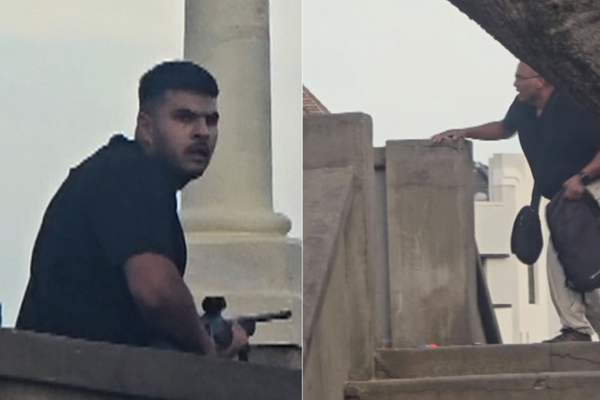
Three months ago Keely Hodgkinson went to Windsor Castle to collect her MBE from Prince William and, unwittingly, nearly derailed her season. The trip from Manchester made her back stiff. Soon afterwards, she tore her right hamstring.
“It was four hours in a car one way and four hours back,” says Trevor Painter, one of her coaches. “If she does things like that, it does mess her back up a little bit. And unfortunately it was a couple of sessions after that when the problem occurred.”
It was Hodgkinson’s third such injury in nine months – after those to her left hamstring in August and February – and the setback would have ripped the heart out of most mortals. On Saturday, in Silesia, Hodgkinson proved once again that she was out of the box.
Usually, the advice when returning from injury is to play it safe, shake off the cobwebs and focus on bigger targets ahead. But in her first race in 376 days since winning Olympic 800m gold in Paris the 23-year-old only went and blew the bloody doors off. It was not just that her time of 1min 54.74sec was the fastest in the world this year, by almost two seconds. Or that it was the ninth-quickest in history. It was the way she did it: pedal pressed hard to the metal, refusing to give into doubt or ease up before the line.
It was one of the most quietly impressive things I’ve seen this sporting year, especially as Hodgkinson was not confident behind the scenes. “There was a lot of pressure on her,” Painter says. “It was her first race since the Olympics and there were people on X saying we’re deluded when the Wavelight technology showed we were going for 1:54.6. She asked me: ‘Do you think I can do this?’ And I was like: ‘Of course.’”
It was also one in the eye for the armchair critics, who have long questioned Hodgkinson’s love of posting TikToks, fashion and having fun. “Keely gets a lot of stick online, especially while she’s been injured,” says Painter. “People keep saying, ‘Oh, stop doing TikToks and get training and stuff like that’.” Well, she is training. She’s working damn hard. But she plays hard as well and relaxes in her way. Her way is making goofy videos on TikTok.”
Painter’s confidence in Hodgkinson proved to be spot on. But her performance only reinforced what we learned in Paris: that Hodgkinson is Britain’s greatest sporting talent. Sure, Rory McIlroy completed a career grand slam this year, Luke Littler won his first world darts title and the Lionesses won the Euros. But which other Briton dominates a global sport the way she does?
The scary thing is that she should only get better now she is much stronger then before. “Because of her injury she has only been in spikes for six weeks,” says Painter. “We had to start off slow and she’s still not run that quick, really, in terms of speed work in training. But she’s very, very strong because of the way we’ve had to train all year. I think she’s got a 1:53 in her. But you need the right race, the right weather and the right track.”
That brings Jarmila Kratochvilova’s longstanding, and controversial, world record of 1:53.28 into play, with the Czech athlete setting her time in 1983 when doping was rife behind the iron curtain. Kratochvilova has always maintained her physique came from working on her uncle’s farm.
Painter does not entirely rule out Hodgkinson going for a crack at the record after the world championships next month. “In Tokyo she won’t have a pacemaker and so she will have to run it a little differently. But she’s planning to carry on and do the Athlos meeting in New York in October. So you never know. If we can tempt [the Dutch 400m hurdles runner] Femke Bol to come to New York to pace Keely to 600m then it might be on.”
Whatever happens next, Hodgkinson’s team are determined the injuries that put a long pause on her 2025 campaign will not happen again. In training, she does fewer high-intensity sessions and more endurance work. But the biggest difference is that the M11 track club, run by Painter and his wife, Jenny Meadows, also now has a full-time physiotherapist funded by Nike, one of Hodgkinson’s sponsors.
“We’re just making sure Keely’s body’s in the right place before she does any sort of fast running because of the problems she’s had,” Painter says. “But it’s benefiting the whole group and not just Keely.”
Perhaps the only surprise is that Hodgkinson is not a bigger name. Yes, she has more than half a million followers on Instagram and won the 2024 BBC Sports Personality of the Year. But if we were in the 70s or 80s she would be on the back pages every time she sneezed and BBC and ITV would be fighting to show her races.
That is partly a wider issue with track and field, which yo‑yos between being the biggest Olympic sport every four years and hidden behind the red button or streamed on obscure websites. But the Diamond League meeting in Silesia on Saturday, broadcast on BBC Two, proved another compelling advert for the sport with several high-quality races, including a thrilling men’s Olympic 100m final rematch between Kishane Thompson and Noah Lyles and a gutsy attempt by Faith Kipyegon to beat the highly contentious women’s world 3,000m record, set in 1993 by China’s Wang Junxia. As Painter says, there was certainly a lot more drama than in a typical Formula One race, where, as he put it, the same car wins most of the time.
Whether track and field’s fortunes can be revived is a discussion for another day. But in Hodgkinson it certainly has Britain’s most talented sports star. And it is not even close.







